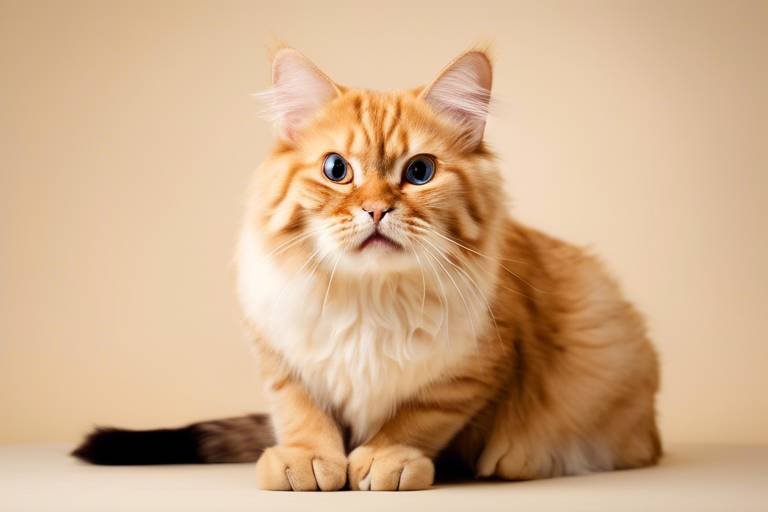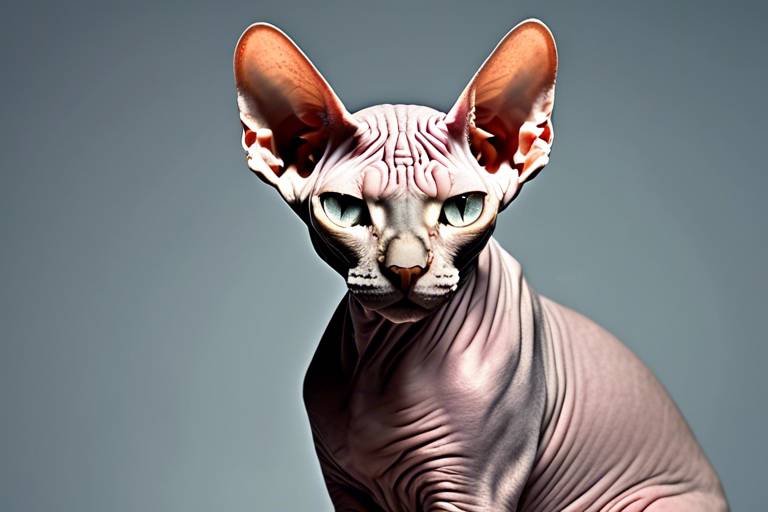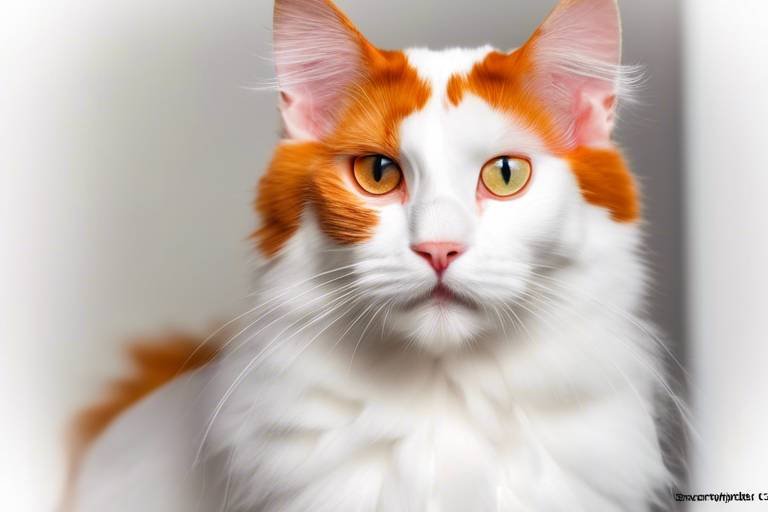Exploring the Playful Personality of the Norwegian Forest
The Norwegian Forest cat, often affectionately referred to as the “Wegie,” is a breed that embodies a delightful blend of charm, playfulness, and intelligence. With their captivating looks and engaging personalities, these cats have won the hearts of many pet lovers around the world. Imagine a feline that combines the grace of a forest creature with the playful antics of a kitten—this is the essence of the Norwegian Forest cat. Their playful nature is not just a trait; it’s a lifestyle that permeates their interactions and daily activities. From their mischievous pounces to their curious explorations, these cats bring an element of joy and surprise into any household.
One of the most fascinating aspects of the Norwegian Forest cat is how their playful personality is deeply rooted in their history and environment. Originating from the rugged landscapes of Norway, these cats have adapted to thrive in various settings, making them not only resilient but also highly adaptable. Their playful demeanor can often be traced back to their need for survival in the wild, where agility and curiosity were essential. This playful spirit is what makes them such engaging companions, as they are always ready to embark on a new adventure, whether it's chasing a feather toy or climbing to new heights on a cat tree.
Moreover, the Norwegian Forest cat’s playful personality is complemented by their intelligence. They are not just passive participants in play; they actively seek out challenges and stimulation. This breed thrives on mental engagement, which is why interactive play is so crucial. Owners often find themselves entertained by their Norwegian Forest cats as they devise new ways to engage with their toys or explore their surroundings. Whether they are batting at a ball of yarn or engaging in a game of hide and seek, these cats have a unique ability to turn any moment into a playful experience.
In addition to their playful antics, Norwegian Forest cats are known for their affectionate nature. They are social creatures that enjoy the company of their human companions and can often be found following their owners around the house, ready to join in on whatever fun is happening. This blend of playfulness and affection creates a strong bond between the cat and its owner, making them not just pets but also beloved family members. Their ability to engage in playful interactions with children and other pets further enhances their appeal as a family-friendly breed.
In summary, the Norwegian Forest cat is a perfect example of how a playful personality can enhance the joy of pet ownership. Their unique blend of charm, intelligence, and affectionate nature makes them stand out in the feline world. As we explore more about their history, physical characteristics, and behavior, it becomes clear that these cats are not just pets; they are companions that bring happiness and laughter into our lives.
- What makes Norwegian Forest cats so playful? Their playful nature is a combination of their history as agile hunters and their social, affectionate personality.
- Are Norwegian Forest cats good with children? Yes! They are known for their gentle demeanor and often enjoy playing with children.
- How can I keep my Norwegian Forest cat entertained? Engage them with interactive toys, climbing structures, and puzzle games to stimulate their playful spirit.
- Do Norwegian Forest cats require a lot of exercise? While they are playful, they can get their exercise through play and exploration, making them suitable for various living environments.
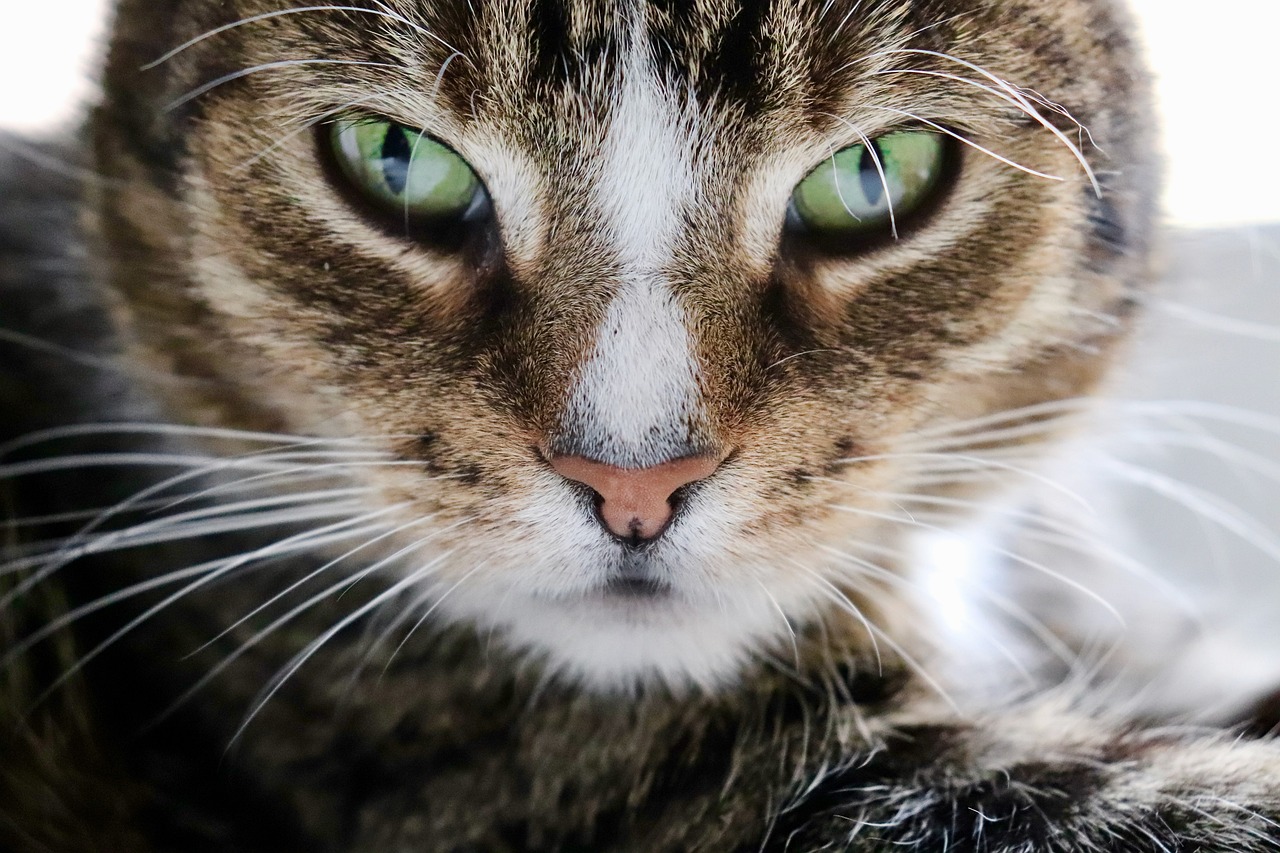
Origin and History
The Norwegian Forest cat boasts a captivating history that intertwines with the rich tapestry of Scandinavian folklore. These majestic felines are believed to have roamed the forests of Norway for centuries, adapting to the harsh climates and rugged terrains of their homeland. Legends tell of these cats being companions to the Vikings, who cherished their hunting skills and playful spirits. Picture a time when these cats prowled the snow-laden landscapes, their thick fur glistening in the sunlight, ready to engage in a playful chase after a fluttering bird or a rustling leaf.
According to folklore, the Norwegian Forest cat is often associated with the mythical Freyja, the goddess of love and fertility, who was said to ride a chariot pulled by these magnificent creatures. This connection to a powerful deity not only highlights the cat's esteemed status in history but also underscores its playful and affectionate nature. As the tales of these cats spread, they became a beloved symbol of Norwegian culture, representing strength, agility, and of course, a playful personality.
In the early 20th century, the breed faced challenges due to the introduction of modern cat breeds and the impact of World War II. However, dedicated breeders worked tirelessly to preserve the Norwegian Forest cat's unique traits and playful demeanor. Their efforts culminated in the official recognition of the breed in the 1970s, allowing these charming cats to capture the hearts of families worldwide.
Today, the Norwegian Forest cat is celebrated not only for its striking appearance but also for its playful personality and adaptability. Understanding their origin helps us appreciate the traits that make them such delightful companions. Their history is a testament to resilience and charm, reminding us that these cats are not just pets; they are a living piece of folklore that continues to enchant us with their playful antics and loving nature.
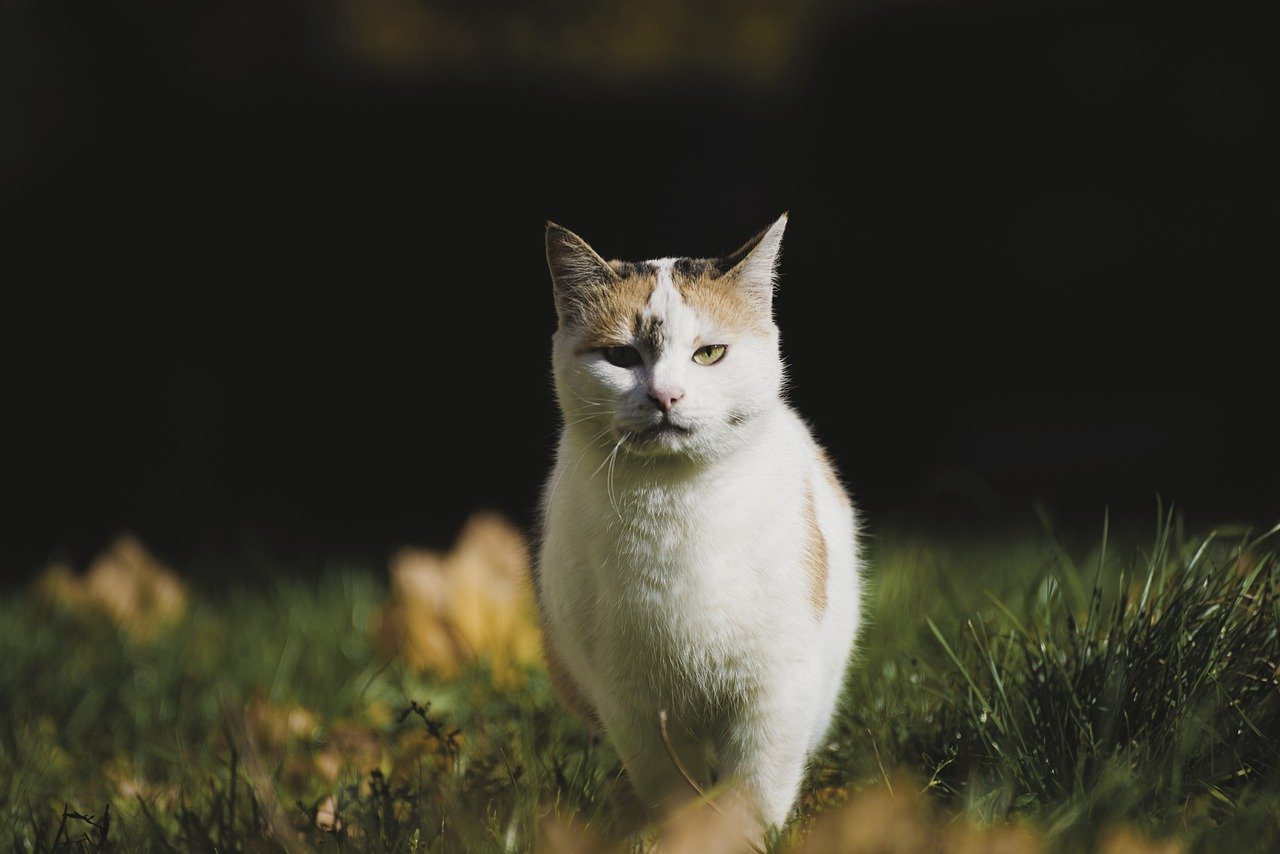
Physical Characteristics
The Norwegian Forest cat is a stunning breed that captivates cat lovers with its robust build and striking appearance. These felines are not just beautiful; they are built for survival in harsh Scandinavian climates. One of their most notable features is their thick, water-repellent fur, which consists of a dense undercoat and a longer, coarser outer coat. This unique fur structure not only keeps them warm during cold winters but also adds to their playful personality, as they can comfortably romp around in various environments.
When you first lay eyes on a Norwegian Forest cat, you might be struck by their large, tufted ears and bright, expressive eyes. These features contribute to their overall charm and help them excel in their playful antics. Typically, their eyes can be green, gold, or copper, and they often have a mischievous glint that hints at their lively nature. Additionally, their bushy tails serve as a balancing tool, allowing them to navigate their surroundings with agility and grace.
In terms of size, Norwegian Forest cats are considered a medium to large breed, with males generally weighing between 12 to 16 pounds and females ranging from 8 to 12 pounds. Their muscular build and strong bones provide the strength needed for their playful leaps and bounds. This breed is also known for its large paws, which are designed to help them traverse snowy terrains, making them excellent climbers. Their physical characteristics not only make them visually appealing but also contribute to their adaptability and playful spirit.
| Physical Trait | Description |
|---|---|
| Fur | Thick, water-repellent, with a dense undercoat and long outer coat |
| Eyes | Bright and expressive, typically green, gold, or copper |
| Size | Medium to large; males weigh 12-16 lbs, females 8-12 lbs |
| Tail | Long and bushy, aiding in balance and agility |
| Paws | Large and strong, designed for climbing and traversing snow |
In conclusion, the Norwegian Forest cat's physical characteristics are not merely for show; they play a crucial role in enhancing their playful personality. Their unique blend of strength, agility, and charm makes them not only beautiful companions but also playful partners in exploration. Whether they're chasing after a feather toy or climbing to the highest perch in your home, their physical traits complement their lively spirit beautifully.
- What is the lifespan of a Norwegian Forest cat? Typically, they live between 12 to 16 years, given proper care.
- Do Norwegian Forest cats require special grooming? Yes, they benefit from regular grooming due to their thick fur, especially during shedding seasons.
- Are they good with kids? Absolutely! Their playful and gentle nature makes them great companions for children.
- How much exercise do they need? Norwegian Forest cats are active and enjoy playtime, so daily interaction and play are essential for their well-being.
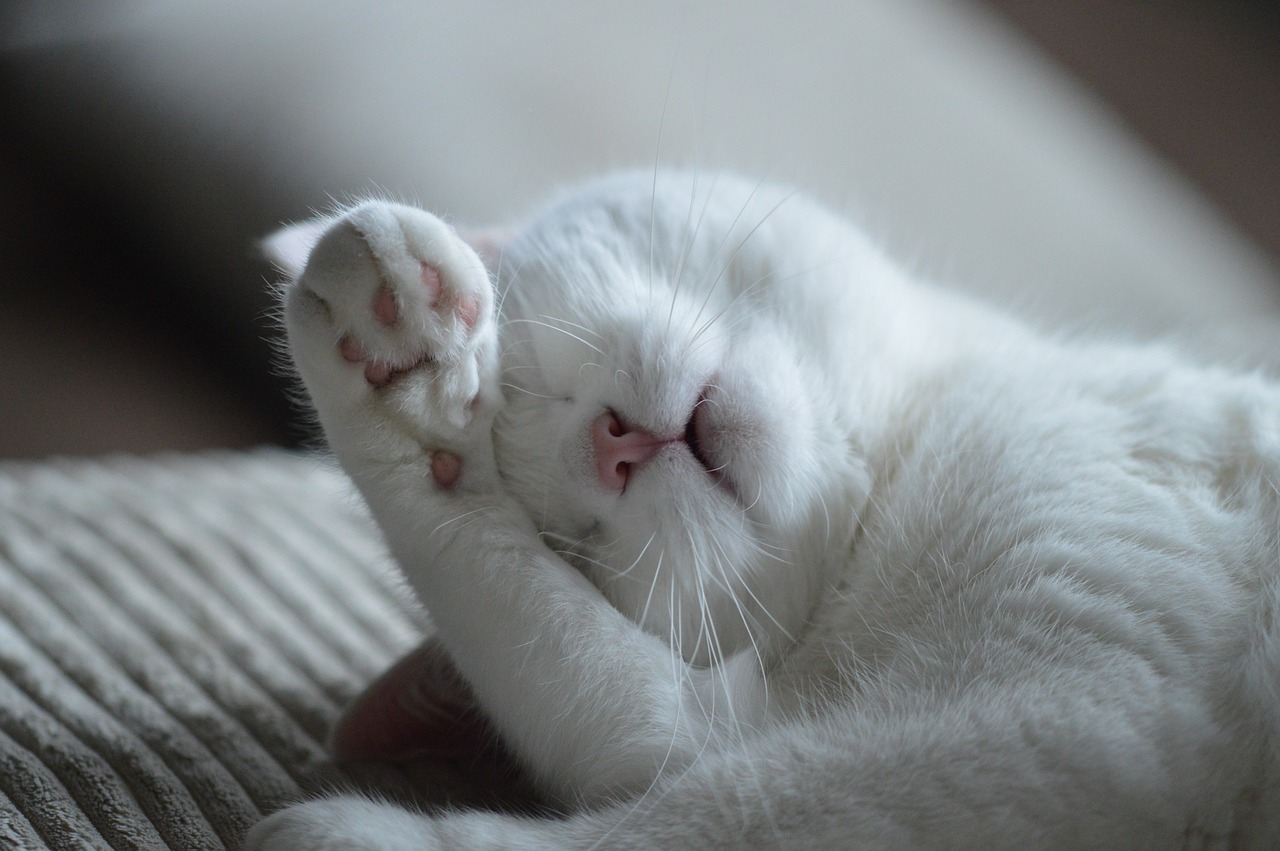
Playful Behavior
The Norwegian Forest cat is a true embodiment of playfulness, exuding a vibrant energy that can light up any room. Their playful behavior is not just a phase; it’s a fundamental aspect of their personality that reflects their intelligence and natural instincts. You might find them darting across the living room, leaping from one piece of furniture to another, or engaging in a spirited game of chase with a feather toy. It’s almost as if they are in a constant state of play, reminding us of the sheer joy and spontaneity that life can offer.
One of the most delightful aspects of their playful nature is their curiosity. Norwegian Forest cats are known to explore their surroundings with a sense of wonder, much like a child discovering a new playground. They thrive on interactive play, which not only entertains them but also strengthens the bond between them and their owners. Engaging them in activities that stimulate their hunting instincts, such as using laser pointers or wand toys, can lead to hours of entertainment. These activities mimic their natural behaviors and help keep their minds sharp.
Moreover, it’s fascinating to observe how these cats have their own unique preferences when it comes to toys. While some may be enamored with crinkly balls that make noise, others might prefer plush mice or even simple cardboard boxes. The variety of toys available can cater to their playful spirit, and it’s essential for owners to experiment and discover what truly excites their furry companions. Here’s a quick look at some of their favorite playthings:
| Toy Type | Description |
|---|---|
| Feather Wands | Great for interactive play, mimicking the movement of birds. |
| Laser Pointers | Stimulates their hunting instincts as they chase the elusive dot. |
| Crinkly Balls | Offers auditory stimulation and encourages pouncing and batting. |
| Catnip Toys | Excites their senses, often leading to playful antics. |
In addition to interactive play, Norwegian Forest cats also enjoy solo playtime, showcasing their independent nature. You may catch them batting around a toy mouse or engaging in a game of hide-and-seek with a shadow on the wall. This ability to entertain themselves is a testament to their adaptability and intelligence. To support this playful spirit, it’s crucial for owners to create an enriching environment filled with climbing structures, scratching posts, and various toys that cater to their playful instincts.
Understanding their playful behavior is key to ensuring they remain happy and healthy. Regular play sessions help expend their energy and prevent boredom, which can lead to behavioral issues. So, whether you’re tossing a ball or simply watching them explore, embracing their playful nature is an enriching experience for both you and your Norwegian Forest cat.
- How much playtime do Norwegian Forest cats need? - Ideally, they should engage in at least 20-30 minutes of interactive play each day to keep them stimulated and happy.
- What are the best toys for Norwegian Forest cats? - Toys that mimic hunting, such as feather wands, laser pointers, and crinkly balls, are excellent choices.
- Can Norwegian Forest cats play alone? - Yes, they can entertain themselves, but providing a variety of toys and climbing structures is essential to keep them engaged.
Interactive Play
When it comes to the Norwegian Forest cat, interactive play is not just a pastime; it’s a crucial part of their well-being. These cats are bursting with energy and curiosity, making them natural athletes in the realm of feline fun. Engaging in interactive play not only satisfies their instinctual need to hunt and explore but also strengthens the bond between you and your furry friend. Imagine your cat pouncing on a feather toy, eyes wide with excitement, as if they were a lion on the African savannah! This is the kind of joy that interactive play brings.
One of the best ways to engage your Norwegian Forest cat is through a variety of toys that mimic their natural hunting behaviors. Toys that move, make noise, or can be tossed around will captivate their attention. For instance, laser pointers can provide endless entertainment as they chase that elusive red dot, while feather wands can stimulate their instinct to pounce and leap. It’s a dance of agility and grace, and you’re the choreographer! However, it’s essential to keep the sessions balanced; too much stimulation can lead to overstimulation, so always watch for signs of fatigue.
Another fantastic way to enhance interactive play is through structured games. Consider setting up an obstacle course using household items like chairs, boxes, and tunnels. This transforms your living room into a mini feline playground! Encourage your cat to navigate the course using treats or their favorite toys as incentives. Not only does this challenge their physical agility, but it also engages their mind, keeping them sharp and alert.
To ensure that your interactive play sessions are effective, remember to incorporate a variety of activities. Here’s a quick table to illustrate some engaging interactive play options:
| Activity | Description |
|---|---|
| Laser Pointer | A light that your cat can chase, stimulating their hunting instincts. |
| Feather Wands | A wand with feathers attached to a string, perfect for pouncing and leaping. |
| Ball Toys | Small balls that can be batted around, encouraging solo and interactive play. |
| Obstacle Course | A fun setup of obstacles that challenges your cat's agility and intelligence. |
Remember, the key to successful interactive play is to keep it fun and varied. Your Norwegian Forest cat thrives on novelty, so rotating toys and activities can keep their interest piqued. And don’t forget, the most important thing is to enjoy these moments together. Your laughter, your encouragement, and your presence will make playtime an adventure they look forward to every day!
- How often should I engage in interactive play with my Norwegian Forest cat? Aim for at least 15-30 minutes of interactive play each day to keep them mentally and physically stimulated.
- What are the best toys for Norwegian Forest cats? They enjoy feather wands, laser pointers, and toys that mimic prey, such as small balls or stuffed mice.
- Can interactive play help with behavioral issues? Yes, interactive play can reduce boredom and redirect excess energy, which can help mitigate unwanted behaviors.
Solo Playtime
When it comes to solo playtime, the Norwegian Forest cat truly shines, showcasing its independent yet playful spirit. Unlike some pets that rely heavily on human interaction for entertainment, these cats have a unique ability to entertain themselves. Imagine a child playing with a box; the Norwegian Forest cat embodies that same spirit of curiosity and creativity. Their playful antics are not just amusing to watch, but they also serve as an outlet for their natural instincts.
One of the delightful aspects of solo playtime is the variety of activities these cats engage in. They might chase after a feather toy, pounce on a crumpled piece of paper, or even engage in a spirited game of hide and seek with their favorite plush mouse. Their robust physicality and agility allow them to leap and bound with grace, turning any room into their personal playground. It's fascinating to see how a simple cardboard box can become a fortress, a spaceship, or even a cozy hideaway.
To keep your Norwegian Forest cat happily entertained during solo playtime, consider providing a range of stimulating toys. Here are some popular options:
- Interactive Puzzle Toys: These toys challenge their intelligence and keep their minds sharp.
- Feather Wands: Perfect for mimicking the thrill of a hunt, allowing them to leap and pounce.
- Laser Pointers: These can provide endless entertainment as they chase the elusive dot around the room.
Creating an environment that encourages solo play is essential for their well-being. Cat trees or shelves can provide them with the vertical space they crave, allowing them to climb and explore. Additionally, hiding treats around the house can stimulate their natural hunting instincts, making solo playtime both fun and rewarding. By understanding their playful nature, you can foster an enriching environment that supports their independent spirit while ensuring they remain engaged and happy.
Q: How much playtime does a Norwegian Forest cat need?
A: While they are independent, Norwegian Forest cats thrive on both solo and interactive play. Aim for at least 15-30 minutes of engaging playtime each day, along with opportunities for solo activities.
Q: Can Norwegian Forest cats play alone for long periods?
A: Yes, they are quite adept at entertaining themselves. However, it's important to provide them with stimulating toys and activities to prevent boredom.
Q: What types of toys do Norwegian Forest cats prefer?
A: They enjoy a variety of toys, especially those that mimic hunting behavior, like feather wands, balls, and interactive puzzle toys.
Q: How can I encourage my Norwegian Forest cat to play alone?
A: Providing a variety of toys, creating a stimulating environment, and hiding treats can encourage them to engage in solo playtime.
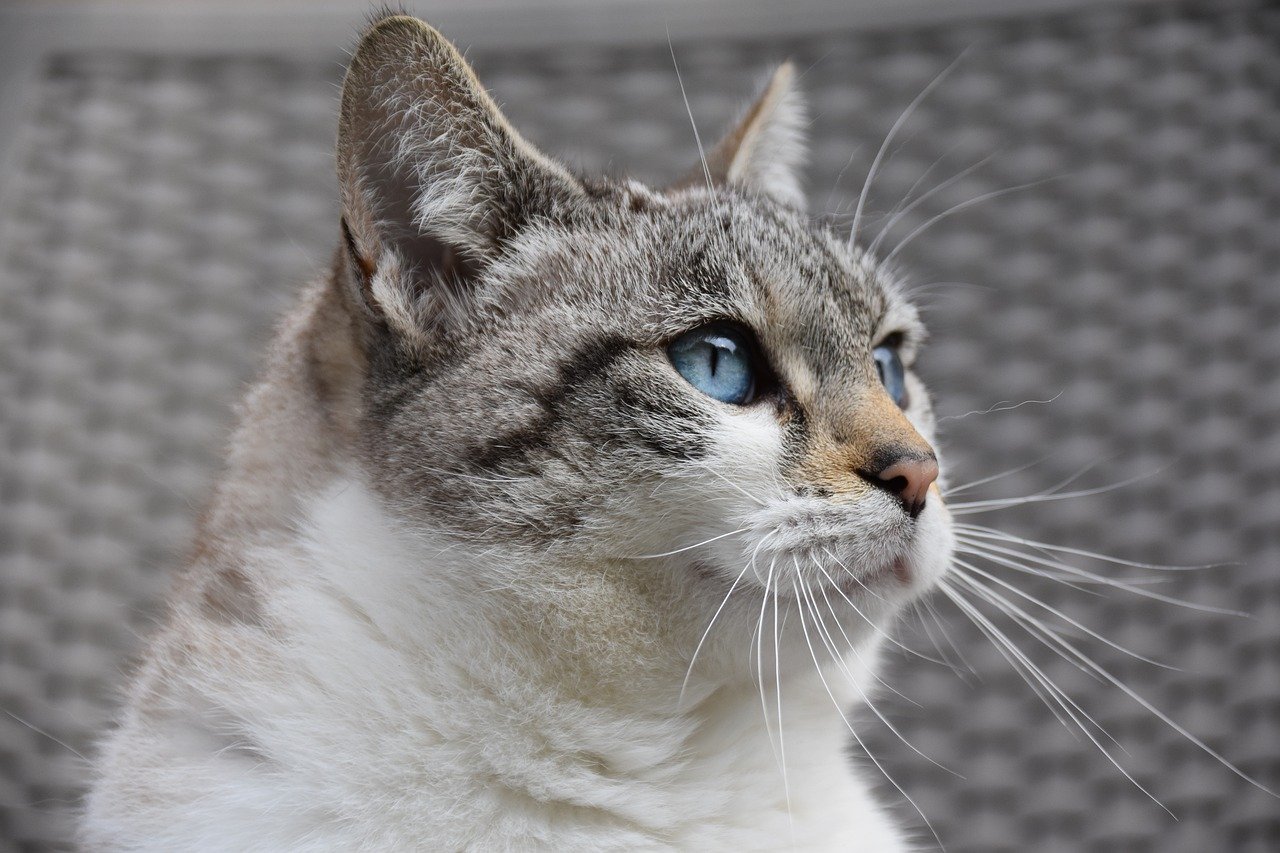
Social Interactions
The Norwegian Forest cat is not just a pretty face; it's a bundle of joy wrapped in fur, known for its friendly disposition. These cats thrive on social interactions, whether it's with their human companions or other pets in the household. Their playful nature makes them the life of the party, and they often seek out opportunities to engage with those around them. Imagine coming home after a long day and being greeted by a furry friend who’s ready to turn your mundane evening into a delightful play session. That's the essence of a Norwegian Forest cat!
One of the most endearing qualities of these cats is their ability to form strong bonds with their families. They are not the type to hide away in a corner; instead, they prefer to be in the midst of family activities, observing, and participating. Their curiosity drives them to explore their environment, and they often find themselves in humorous situations that can leave you in stitches. This social engagement is not just limited to humans; Norwegian Forest cats are known to get along well with other pets as well, creating a harmonious household filled with playful antics.
When it comes to interactions with children, these cats shine brightly. They possess a natural patience that allows them to tolerate the occasional tugging or loud noises that come with having little ones around. In fact, their playful demeanor often leads them to initiate games with children, turning a simple living room into a playground. It's not uncommon to see a Norwegian Forest cat chasing after a ball or engaging in a game of hide-and-seek with the kids. Their gentle nature makes them ideal companions for families, fostering a bond that grows stronger with each playful encounter.
Moreover, their adaptable personality makes them excellent housemates with other pets. Whether it’s a dog or another cat, Norwegian Forest cats typically adjust well to the dynamics of a multi-pet household. They possess a unique ability to read the behavior of other animals, allowing them to engage in playful interactions that can lead to lasting friendships. Imagine a scene where your Norwegian Forest cat is playfully swatting at a dog’s tail, or cuddling up next to another feline friend. These interactions not only enrich their lives but also create a warm and lively atmosphere in the home.
In summary, the social interactions of the Norwegian Forest cat are a reflection of their playful and affectionate nature. Their ability to connect with humans and other pets alike makes them a beloved choice for many households. If you're considering adding one of these charming creatures to your family, be prepared for a whirlwind of fun, laughter, and companionship!
- Are Norwegian Forest cats good with children? Yes, they are known for their gentle demeanor and enjoy playful interactions with kids.
- Can Norwegian Forest cats live with other pets? Absolutely! They are adaptable and often get along well with other animals.
- How social are Norwegian Forest cats? They are very social and thrive on interaction with humans and other pets.
- Do Norwegian Forest cats require a lot of attention? While they enjoy socialization, they can also entertain themselves, making them relatively low-maintenance companions.
With Children
When it comes to finding a furry friend that fits seamlessly into a family with children, the Norwegian Forest cat shines brightly. These cats are not only known for their playful antics but also for their remarkable patience and gentle demeanor. Imagine a fluffy bundle of joy that eagerly participates in your child's imaginative games, from epic battles with stuffed animals to quiet moments of cuddling during storytime. The Norwegian Forest cat thrives in such environments, making them the perfect companion for kids.
One of the most endearing traits of these cats is their ability to adapt to the energetic nature of children. They often enjoy interactive play, which can include chasing after toys or engaging in a game of hide-and-seek. Their playful spirit encourages children to be active, promoting a healthy lifestyle for both the pet and the child. It’s a win-win situation! Moreover, Norwegian Forest cats are typically very tolerant, which means they can handle the occasional tug on their fur or enthusiastic hugs without becoming overly stressed.
To ensure a harmonious relationship between your Norwegian Forest cat and your children, it’s essential to teach the kids about gentle handling. Here are some tips to foster a positive interaction:
- Always supervise playtime to prevent any unintentional roughhousing.
- Encourage children to respect the cat's space, allowing the cat to retreat when it needs a break.
- Teach kids to use toys rather than their hands when playing, ensuring that the cat associates playtime with fun rather than potential injury.
In addition, Norwegian Forest cats can be incredibly affectionate. They often seek out attention and enjoy being part of family activities. Picture your cat curling up next to your child as they do homework or lying beside them during movie night. This affectionate nature not only strengthens the bond between the cat and the child but also instills a sense of responsibility in kids as they learn to care for and nurture their pet.
In conclusion, the Norwegian Forest cat is more than just a pet; it's a playful companion that can enrich the lives of children and families. Their friendly disposition, combined with a playful spirit, makes them an ideal addition to any household. With the right guidance and understanding, these cats can create lasting memories with children, turning every day into a new adventure.
With Other Pets
When it comes to sharing a home with other pets, the Norwegian Forest cat stands out as a remarkably adaptable and sociable companion. Their playful personality makes them a joy to have around, not just for their human families but also for other furry friends. These cats often exhibit a natural curiosity and a desire to engage, which can lead to delightful interactions with dogs, cats, and even small animals. Imagine a Norwegian Forest cat, with its majestic fur and bright eyes, playfully chasing after a bouncing ball alongside a friendly dog. It's a scene that warms the heart!
One of the reasons these cats can coexist so well with other pets is their gentle demeanor. Norwegian Forest cats are typically patient and tolerant, which is especially beneficial in a multi-pet household. They tend to approach new friends with a sense of curiosity rather than aggression. This can be especially important when introducing a new pet into the home. A slow and gradual introduction is key, allowing the Norwegian Forest cat to explore the new addition at its own pace. This method not only minimizes stress but also fosters a playful bond over time.
Interestingly, their playful antics can be contagious! Many pet owners report that their Norwegian Forest cats engage other pets in games of chase or hide-and-seek. This playful interaction can enhance the social dynamics of the household. For instance, if you have a dog that loves to fetch, a Norwegian Forest cat might just decide to join in on the fun, darting around and playfully pouncing on the ball when it rolls away. This kind of play not only keeps them entertained but also helps to strengthen the bond between all pets involved.
However, it’s essential to monitor interactions, especially between a Norwegian Forest cat and smaller pets like hamsters or birds. While these cats are generally friendly, their natural hunting instincts can sometimes kick in. Providing safe spaces for smaller pets and ensuring that playtime is supervised can help maintain harmony in a multi-pet environment. Here are a few tips to ensure a peaceful coexistence:
- Supervised Introductions: Always supervise initial meetings to gauge reactions.
- Safe Spaces: Create safe zones for smaller pets where they can retreat if they feel overwhelmed.
- Shared Playtime: Engage all pets in playtime activities to foster a sense of teamwork.
In conclusion, the Norwegian Forest cat's playful personality not only enriches its own life but also enhances the lives of other pets in the household. Their friendly nature and adaptability make them a perfect fit for families with multiple pets. Whether it’s through playful antics or gentle interactions, these cats truly shine in a multi-pet environment!
- Do Norwegian Forest cats get along with dogs?
Yes, they are typically friendly and can form strong bonds with dogs, especially if introduced properly. - Can Norwegian Forest cats coexist with smaller pets?
While they can get along with smaller pets, supervision is essential to ensure safety. - How can I help my Norwegian Forest cat adjust to a new pet?
Gradual introductions and providing safe spaces for each pet can help ease the transition.
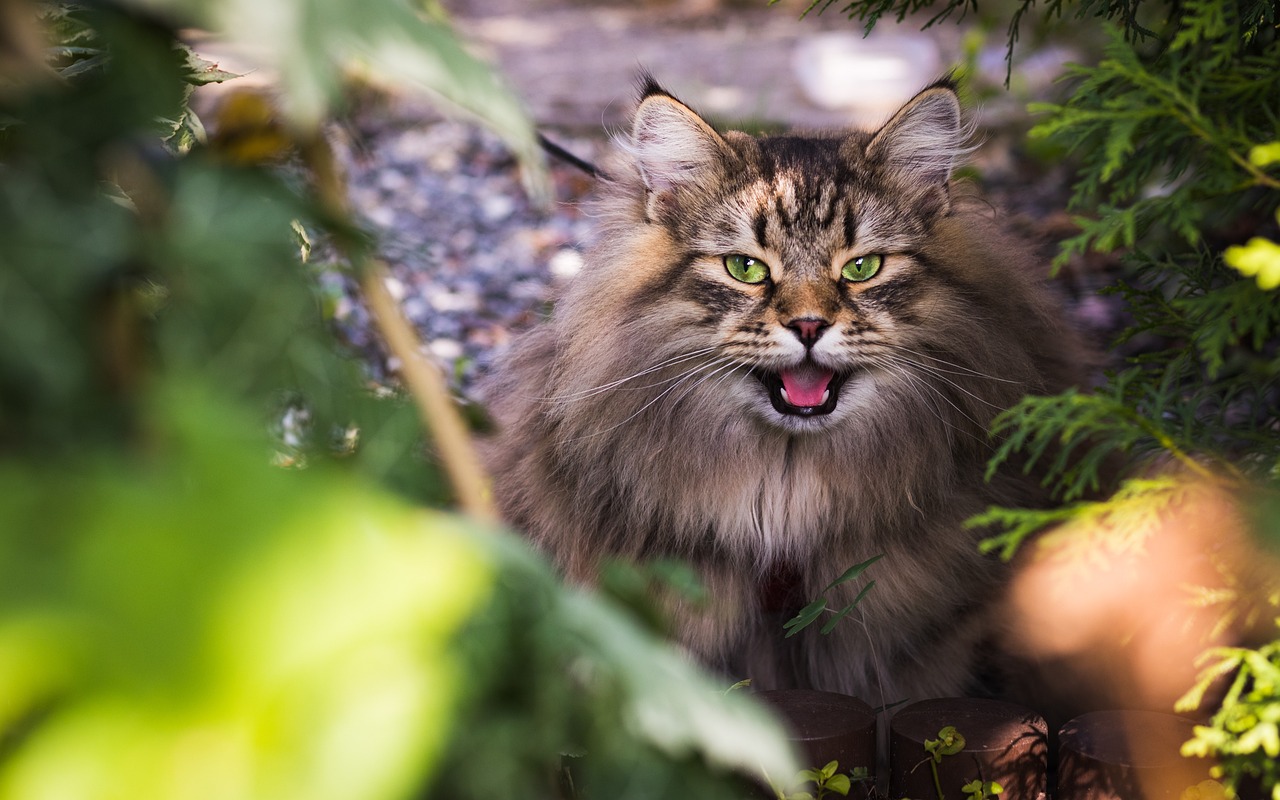
Training and Enrichment
Training a Norwegian Forest cat is not just a necessity; it’s a delightful journey that enhances their playful personality and strengthens the bond between you and your furry friend. These cats are naturally intelligent and curious, making them quite receptive to learning new things. Imagine teaching your cat to fetch a toy or even to come when called—how cool would that be? It’s like having your very own feline superstar! But remember, patience is key. Start with simple commands and gradually increase the complexity as they become more comfortable.
One effective way to engage your Norwegian Forest cat is through positive reinforcement. This means rewarding them with treats or affection whenever they successfully perform a desired behavior. For example, if your cat responds to their name or comes to you when called, shower them with praise or a tasty snack. This not only encourages them to repeat the behavior but also keeps the training process fun and enjoyable. You can also incorporate their favorite toys into the training sessions to keep their interest piqued.
Enrichment activities are equally important for maintaining a Norwegian Forest cat's playful nature. These activities can range from simple toys to complex puzzles that challenge their intellect. Think of it like setting up an obstacle course for your cat—something that engages their mind and body. Here are some popular enrichment ideas:
- Interactive Toys: Toys that mimic prey, such as feather wands or laser pointers, can be great for stimulating their hunting instincts.
- Puzzle Feeders: These feeders require your cat to solve a puzzle to get their food, combining meal time with mental exercise.
- Cat Trees and Scratching Posts: Providing vertical spaces encourages climbing and scratching, which are natural behaviors for cats.
- Hide and Seek: Hide treats around the house and let your cat use their nose to find them. It’s a fun way to engage their natural hunting skills!
It’s essential to keep the training sessions short and sweet—about 5 to 10 minutes a few times a day is ideal. This prevents your cat from losing interest and helps them stay engaged. Remember, every cat is different, and some may take longer to learn than others. Celebrate small victories and keep the atmosphere lighthearted. After all, the goal is to have fun while enriching their lives!
As you embark on this training adventure, be sure to observe your cat’s reactions. If they seem overwhelmed or disinterested, it might be time to switch tactics or take a break. The beauty of training a Norwegian Forest cat lies in their unique personality; they thrive on interaction and love to play. So, whether you're teaching them tricks or simply engaging them in play, you’re sure to discover just how charming and entertaining these cats can be.
1. How long should I train my Norwegian Forest cat each day?
It's best to keep training sessions short, around 5 to 10 minutes, a few times a day. This keeps your cat engaged and prevents boredom.
2. What are the best types of toys for Norwegian Forest cats?
Interactive toys like feather wands, laser pointers, and puzzle feeders are excellent choices as they stimulate both their mind and natural hunting instincts.
3. Can Norwegian Forest cats learn tricks?
Absolutely! With patience and positive reinforcement, these intelligent cats can learn a variety of tricks, from basic commands to more complex tasks.
4. How can I tell if my cat is bored?
Signs of boredom can include excessive sleeping, destructive behavior, or a lack of interest in play. If you notice these signs, it might be time to introduce new toys or activities.
Basic Commands
When it comes to training your Norwegian Forest cat, can be a fun and rewarding way to engage their playful spirit. These cats are not only intelligent but also eager to please, making them quite receptive to learning new things. Imagine teaching your furry friend to respond to simple commands like "sit," "come," or "high five!" It’s not just about obedience; it’s about building a bond and having a blast together.
Start with the command "sit." This is often the easiest for cats to grasp. Begin by holding a treat above their head and slowly moving it back towards their tail. As they look up to follow the treat, their natural instinct will be to lower their bottom to the ground. As soon as they do, say "sit" and reward them with the treat. Consistency is key here, so practice this daily. Soon enough, your Norwegian Forest cat will not only sit on command but might even do it with a playful flourish!
Once they’ve mastered "sit," you can move on to "come." This command is particularly useful for keeping your cat safe and ensuring they come to you when called. Start by using their name followed by "come" in a happy tone. You can also use a clicker or a treat to reinforce this behavior. For instance, say "Fluffy, come!" while showing them a treat. When they approach, reward them immediately. They’ll quickly learn that coming to you means fun and treats, reinforcing their playful nature.
For a little extra fun, consider teaching them a trick like "high five." To do this, hold a treat in your hand and allow your cat to sniff it. When they reach out with their paw to grab it, gently tap their paw and say "high five." Reward them with the treat immediately. This not only showcases their intelligence but also adds an element of playfulness to your training sessions.
Training sessions should be kept short and enjoyable, ideally around 5 to 10 minutes each. Norwegian Forest cats thrive on mental stimulation, so incorporating play into your training can keep them engaged. Use toys as rewards or take short breaks to play with them in between commands. This way, you not only teach them commands but also keep their playful spirit alive and well.
In summary, training your Norwegian Forest cat in basic commands is not just about teaching them to obey; it’s about creating a fun and interactive environment that fosters their natural curiosity and playful nature. Remember, patience and positive reinforcement are your best friends in this journey. Before you know it, you’ll have a well-trained companion who loves to show off their skills.
- Q: How long does it take to train a Norwegian Forest cat?
A: Training times can vary, but with consistency and patience, many cats can learn basic commands within a few weeks. - Q: Can Norwegian Forest cats learn tricks?
A: Absolutely! They are intelligent and can learn a variety of tricks, especially when training is fun and engaging. - Q: What is the best way to reward my cat during training?
A: Treats, praise, and playtime are excellent rewards that can motivate your cat during training sessions.
Enrichment Activities
When it comes to keeping your Norwegian Forest cat happy and healthy, are key. These activities not only stimulate their mind but also cater to their playful nature, ensuring they remain engaged and active. Think of enrichment as the cat equivalent of a good workout mixed with a fun game—it's all about keeping their spirits high and their bodies fit!
One of the most effective ways to enrich your cat's environment is through interactive toys. These toys can include anything from feather wands to laser pointers. The thrill of the chase is irresistible to these playful felines. Imagine your cat leaping and bounding after a feather toy, their eyes wide with excitement. This not only provides physical exercise but also sharpens their hunting instincts, which are deeply rooted in their genetics.
In addition to interactive toys, consider setting up a cat tree or climbing shelves in your home. Norwegian Forest cats are natural climbers, and providing vertical space allows them to explore and satisfy their curiosity. A well-placed cat tree can become a playground where they can climb, perch, and survey their kingdom—your living room! Not only does this cater to their playful side, but it also gives them a sense of security and territory.
For those days when you're busy, it's essential to have a variety of self-play options. Puzzle feeders are a fantastic choice. These clever devices challenge your cat to figure out how to get their treats, keeping their minds sharp while they enjoy a tasty reward. You can also hide treats around the house for a little treasure hunt, which allows your cat to use their nose and instincts to seek out hidden goodies.
Moreover, incorporating cat-safe plants into your home can provide mental stimulation. Cats love to nibble on grass, and having a designated spot for them to munch on catnip or wheatgrass can be both enriching and entertaining. Just imagine the joy on your cat's face as they discover a new plant to explore!
Lastly, don’t underestimate the value of scheduled playtime with your Norwegian Forest cat. Setting aside time each day to engage in play not only strengthens your bond but also allows you to observe your cat's preferences. Do they prefer chasing, climbing, or pouncing? Tailoring your play sessions to their interests will keep them coming back for more fun!
In summary, enriching your Norwegian Forest cat's life with a mix of interactive toys, climbing structures, puzzle feeders, and regular playtime will keep them engaged and happy. Remember, a stimulated cat is a happy cat, and with their playful personality, your Norwegian Forest cat will thrive in an enriched environment!
- What are the best toys for Norwegian Forest cats? Interactive toys like feather wands, laser pointers, and puzzle feeders are ideal for keeping them entertained.
- How much exercise do Norwegian Forest cats need? They require daily playtime to stay healthy, ideally around 20-30 minutes of interactive play each day.
- Can Norwegian Forest cats be left alone? While they are independent, it's essential to provide them with enrichment activities to keep them occupied when you're not home.
- What is the best way to train a Norwegian Forest cat? Use positive reinforcement techniques, such as treats and praise, to encourage desired behaviors.
Frequently Asked Questions
- What makes the Norwegian Forest cat so playful?
The Norwegian Forest cat is naturally playful due to its energetic personality and strong hunting instincts. Their robust build and intelligence allow them to engage in various activities, making playtime a delightful experience for both the cat and its owner.
- How can I keep my Norwegian Forest cat entertained?
To keep your Norwegian Forest cat entertained, provide a variety of toys that stimulate their natural instincts. Interactive toys, puzzle feeders, and climbing structures can keep them engaged. Regular play sessions with you will also help strengthen your bond and provide mental stimulation.
- Are Norwegian Forest cats good with children?
Absolutely! Norwegian Forest cats are known for their gentle and patient nature, making them great companions for children. They enjoy playtime and can handle the excitement of a lively household, which makes them an ideal choice for families.
- Can Norwegian Forest cats live with other pets?
Yes, Norwegian Forest cats are quite adaptable and typically get along well with other pets. Their friendly disposition allows them to coexist harmoniously with dogs and other cats, enhancing the playful dynamics in multi-pet households.
- What are some effective training techniques for Norwegian Forest cats?
Training a Norwegian Forest cat can be both fun and rewarding. Use positive reinforcement techniques like treats and praise to encourage good behavior. Start with basic commands and gradually introduce more complex tasks, keeping sessions short and engaging to hold their attention.
- What enrichment activities can I provide for my Norwegian Forest cat?
Enrichment activities are essential for maintaining your Norwegian Forest cat's playful nature. Consider providing a mix of interactive toys, climbing trees, and puzzle games that challenge their intellect. Regularly rotating toys can also keep their environment fresh and exciting.





